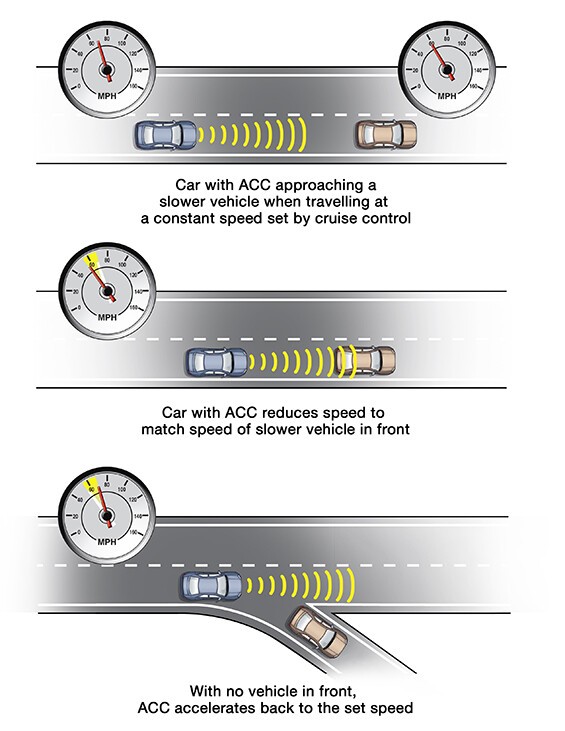Conventional cruise control is a useful feature that helps drivers maintain a constant speed, especially on long highway drives. Adaptive Cruise Control (ACC) takes this a step further, acting as an intelligent evolution of the standard system. Instead of just maintaining a set speed, ACC dynamically adjusts your car’s speed to keep a safe following distance from the vehicle ahead. If the car in front of you slows down, ACC will automatically reduce your speed to match. When the lane ahead clears or the leading car speeds up, your ACC system will smoothly return your vehicle to your pre-set cruising speed. Beyond setting your desired speed, using ACC typically involves a simple activation and choosing your preferred following distance.
Understanding How to Use Adaptive Cruise Control
While the specifics can vary slightly depending on the make and model of your vehicle, the fundamental operation of adaptive cruise control systems remains consistent. Generally, initiating ACC involves setting a desired cruising speed and then selecting a comfortable following distance from the vehicle in front.
Activating and Deactivating ACC
Most modern vehicles equip their steering wheels with integrated controls for ACC. These controls allow for easy activation and adjustments without taking your hands off the wheel. It’s also important to remember that you retain full control and can override the system at any time by simply using the brake or accelerator pedal, effectively deactivating the ACC when needed.
Setting Your Speed
Setting your preferred cruising speed with ACC is usually straightforward. You can typically use dedicated ‘+/- speed’ buttons on your steering wheel to incrementally increase or decrease the set speed. Alternatively, you can accelerate manually to your desired speed using the accelerator pedal and then engage a ‘set’ button to have the ACC system memorize and maintain that speed. It’s worth noting that most ACC systems are designed to function effectively at speeds above approximately 25 MPH.
Adjusting Following Distance
A key feature of adaptive cruise control is the ability to customize the following distance. ACC systems allow you to choose from several pre-set distance options, often represented as short, medium, or long. These settings correspond to the time interval maintained between your car and the vehicle ahead. Adapting this setting is easy and can be done on-the-fly as traffic conditions change. For most driving situations, especially in varying traffic, a longer following distance setting is generally recommended for enhanced safety and smoother operation.
The Technology Behind Adaptive Cruise Control
Similar to traditional cruise control, adaptive cruise control works to maintain your set speed when the road ahead is clear. However, the ‘adaptive’ functionality comes from an added sensor system that constantly monitors the environment in front of your vehicle. This sensor unit is the core component that enables ACC to detect and respond to other vehicles.
Utilizing Speed and Distance Sensors
Adaptive cruise control systems rely on data from two primary types of sensors: a distance sensor and a speed sensor. The distance sensor is responsible for measuring the gap between your car and any vehicles ahead, while the speed sensor monitors your vehicle’s speed. The ACC system intelligently processes the information from these sensors to automatically accelerate or decelerate your car, ensuring that the pre-set following distance is consistently maintained.
Radar-Based ACC Systems: A Closer Look
One common technology used in ACC systems is radar. Radar-based ACC emits radio waves that bounce off objects in front of your car. By analyzing the reflected radar waves, the system can calculate the distance, direction, and relative speed of vehicles ahead. This data enables the ACC to accurately determine if another vehicle is within your chosen following distance and predict the path of your car in relation to surrounding vehicles, allowing it to make precise adjustments to maintain a safe and consistent driving experience.
